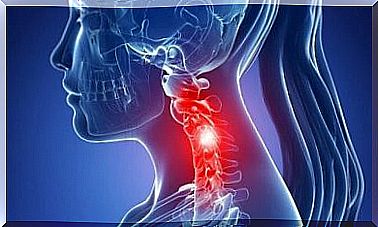Causes Of Migraines And Symptoms And Treatment

A large part of the population suffers regularly from migraines. This neurological disorder severely affects their quality of life. It can affect their mood while leading to depression and isolation. In this article, we will tell you more about the causes of migraines as well as the symptoms and treatment.
What is migraine?
Migraine is a neurological disorder characterized by severe headache. Many of those who suffer from severe headaches often report that it is due to stress, tension or anxiety.

A migraine occurs with localized pain in one or both sides of the head. It is typically a pain that puts the person completely out of the game for a period of time and it affects a large portion of the population.
Classical migraine often begins with symptoms with vision. Sensory disturbances, such as flashing lights or blemishes on the eyes, manifest. These symptoms usually last between 10-30 minutes.
Causes of migraines
People who suffer from migraines tend to experience different patterns and types of pain. The patient may even suffer from various forms of migraine-related pain throughout life.
Therefore, it is extremely important to know the various causes of migraines. This can allow you to prevent or even reduce the intensity.
Causes of migraines are:
- Smoking or alcohol.
- Stress.
- Sleep problems.
- Exposure to strong odors.
- Sudden climate change.
- Consumption of certain foods (artificial sweetener, soy, dairy products, caffeine, chocolate, citrus fruits, bananas, avocados, etc.)
- Overexposure to bright light.
- Certain types of medicine.
Symptoms of this neurological disorder
The symptoms of this disorder are very characteristic and recognizable:
- The primary symptom is an intense headache that spreads from the head to the neck and facial muscles. This pain can last 4-72 hours.
- Nausea and vomiting.
- Migraines can make a person hypersensitive to light and sounds.
- Pale skin.
- Fatigue.
- Heartbeat.
- Visual symptoms. Flashes of light, spots on the eyes, zigzag lines, partial loss of vision or pain in the eyes may occur.
- Psychological changes. Stress, anxiety, insomnia, depression or even nervousness and aggression can occur.
Migraine makes the person unable to do anything. Here are some less common symptoms that can manifest themselves:
- Dizziness.
- Itchy, tingling and tickling sensation.
- Involuntary body movements.
- Unclear speech.
Diagnosis is made based on the causes of migraine

The diagnosis generally depends on the patient’s symptoms. To diagnose the patient, the physician must use a very detailed medical history from the patient. The information the patient provides regarding the pain is, of course, extremely important.
Most patients do not need to see a neurologist to diagnose this disorder. It is only necessary in cases where there is a secondary headache or another type of disorder is suspected. If this is the case, various types of tests such as an MRI scan will typically be performed.
Treatment depends on the various causes of migraines
There are two treatment strategies to combat this condition: Pharmacological treatment and natural treatment methods.
Pharmacological treatment
The choice of medication depends on the various causes of migraines:
- Painkillers or anti-inflammatory drugs such as ibuprofen, aspirin, paracetamol, etc. However, this type of medication is usually only effective when it is a mild or moderate migraine.
- Antiemetics. This is typically used to prevent vomiting and nausea.
- Anti-hypersensitive medicine. This is generally used for migraines caused by high blood pressure.
- Antidepressant. This is obviously best for migraines and headaches caused by depression or tension.
Natural treatment methods
Natural treatment methods to treat migraines are always based on the patient’s diet. It is important to increase your intake of natural foods and eliminate processed foods (pastries, snacks, ready meals, etc.). It is also important to find out if you are intolerant to certain foods such as gluten or lactose.
Natural treatment methods take overall health into account to treat disorders. It can be, for example, the hormonal system, liver function, kidneys and intestines. Acupuncture, homeopathy, magnetic therapy and chromotherapy are techniques that can give good results.









